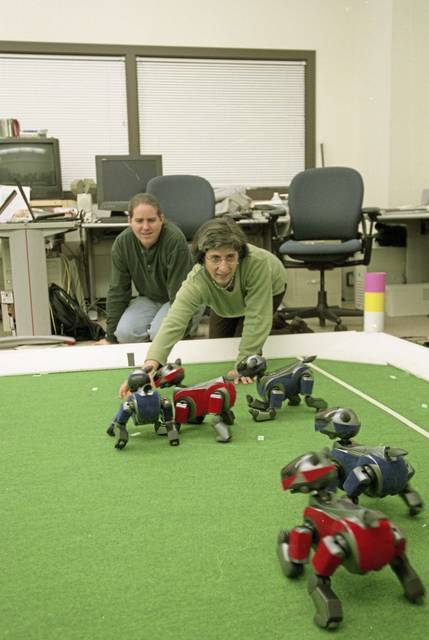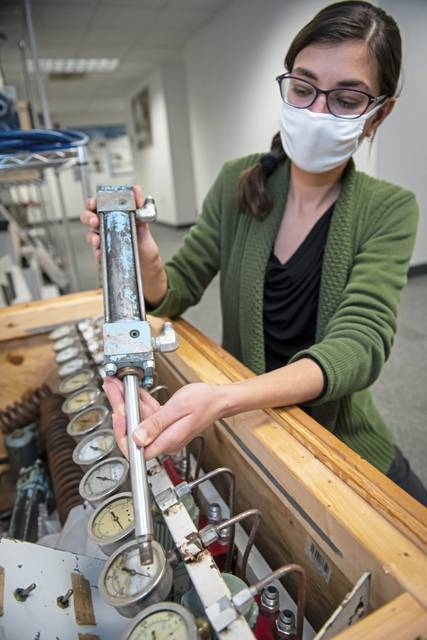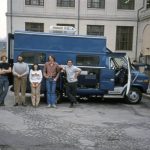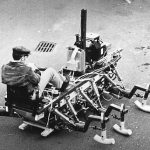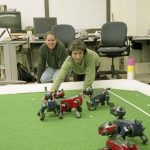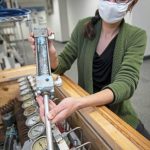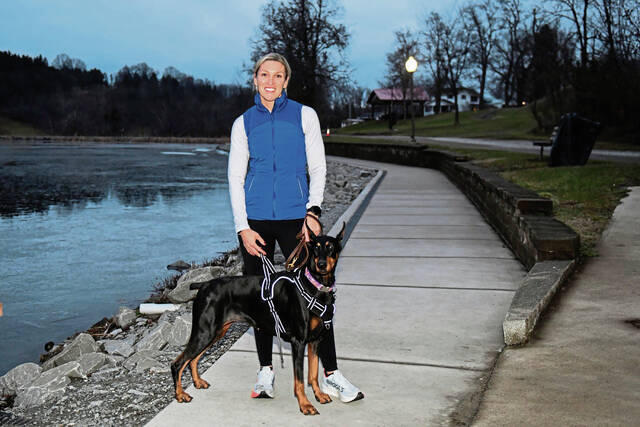A large-scale effort by Carnegie Mellon University to preserve and promote the history of robotics has launched its first online exhibition.
The Robotics Project began in 2019 when a team of archivists at Carnegie Mellon were investigating ways of preserving the history of robotics at the university, said Katherine Barbera, the lead archivist on the project.
They didn’t have a lot of robotics materials in their university archives, she said.
Further research revealed most other archives and museums also had a dearth of information on the history of robotics. That’s a problem they now hope to solve with The Robotics Project, which features a large archive of robotics materials that will be available to students and the community.
“We all encounter, whether we realize it or not, robots in our daily lives,” Barbera said. “It’s important for us as a society to have an understanding of how the field developed so we can understand where it’s going. That’s really our goal: to help folks understand the developments and the technology and the community that makes it possible.”
Barbera and a team of about a dozen archivists, roboticists and others are working to build a large-scale collection of all things robotics. While they aim to preserve the history of robotics at Carnegie Mellon University, the team also plans to look more broadly at the field of robotics as a whole.
They’re collecting robots, prototypes, parts and pieces, along with contextual materials such as video, software, code, letters and reports. Plus, they’re gathering oral histories from experts who helped develop the technologies showcased in the archive.
Chris Atkeson, a roboticist who defined his role with the project as “hoarder-in-chief,” said he’s always been interested in keeping items that might be part of a larger history.
“The incentives in robotics are all in the wrong direction,” he said, explaining that many people who work in the field will disassemble existing robots to use parts for new ones. “You spent money to build a robot, and now you want to build another one. The temptation to take the old robot and rip it apart is immense.”
But through initiatives such as The Robotics Project, Atkeson said he hopes to encourage people to save and preserve artifacts. Those pieces of history, he said, can teach and inspire people when they’re saved and put to good use in archives and museums.
“Let’s save things,” he said. “It’s worth it.”
While saving robotics artifacts is important for the team at The Robotics Project, it’s also difficult, Barbera said.
“These are complex artifacts that have all kinds of technological dependencies,” she said. “We’re facing a challenge where we’re preserving these complex artifacts, some of which no longer exist.”
The artifacts that remain, she said, need careful preservation. The Robotics Project is working to find the best ways to care for those materials, in hopes that their findings will help other institutions to follow suit. Once they learn how best to preserve these materials, it will be easier to gather even more.
The Robotics Project, Barbera explained, is one of the first initiatives to create a major archive of such artifacts. Part of the reason there aren’t many such programs is because of how difficult they are to maintain, she said, adding robotics also is still a relatively young field. Only recently has the field reached the point where it has “a vast history to preserve,” she said.
Barbera is taking advantage of one of the major perks to archiving a relatively new field. She’s able to talk with many experts who were among the first generations of roboticists, who are still alive. Their oral histories will be preserved through the project.
Those roboticists can offer insights on which artifacts they think should be preserved and how best to maintain them.
The Robotics Project’s first exhibition, an online display called Building the Robot Archive, features an explanation of the project and highlights early technologies like Navlab 1, one of the first cars to be controlled by a computer. Developed in 1986 and able to drive only about 2 mph, it was cutting edge at the time. The archive features a video of it driving, as well as an explanation of its significance.
The exhibit also highlights dog-like artificial intelligence robots developed in the early 2000s, first-hand accounts from roboticists, photos showing how artifacts are transferred to Carnegie Mellon’s Robot Archive and a video and explanation of the Trojan Cockroach, the first walking machine controlled by a computer and capable of carrying a person.
“To be able to see these materials and hear from the people who were there is just so wonderful,” Barbera said.
Though the archive is entirely virtual right now, Barbera said they’re hoping to include more in-person exhibitions and programming soon. The virtual presence also will grow, she said.
Atkeson and Barbera encouraged people to learn about the history and hear the stories of robotics. They hope to teach and inspire people through The Robotics Project.
“That’s what a museum can do for you: It can give you a dream,” Atkeson said. “I want kids to dream to build big things.”




